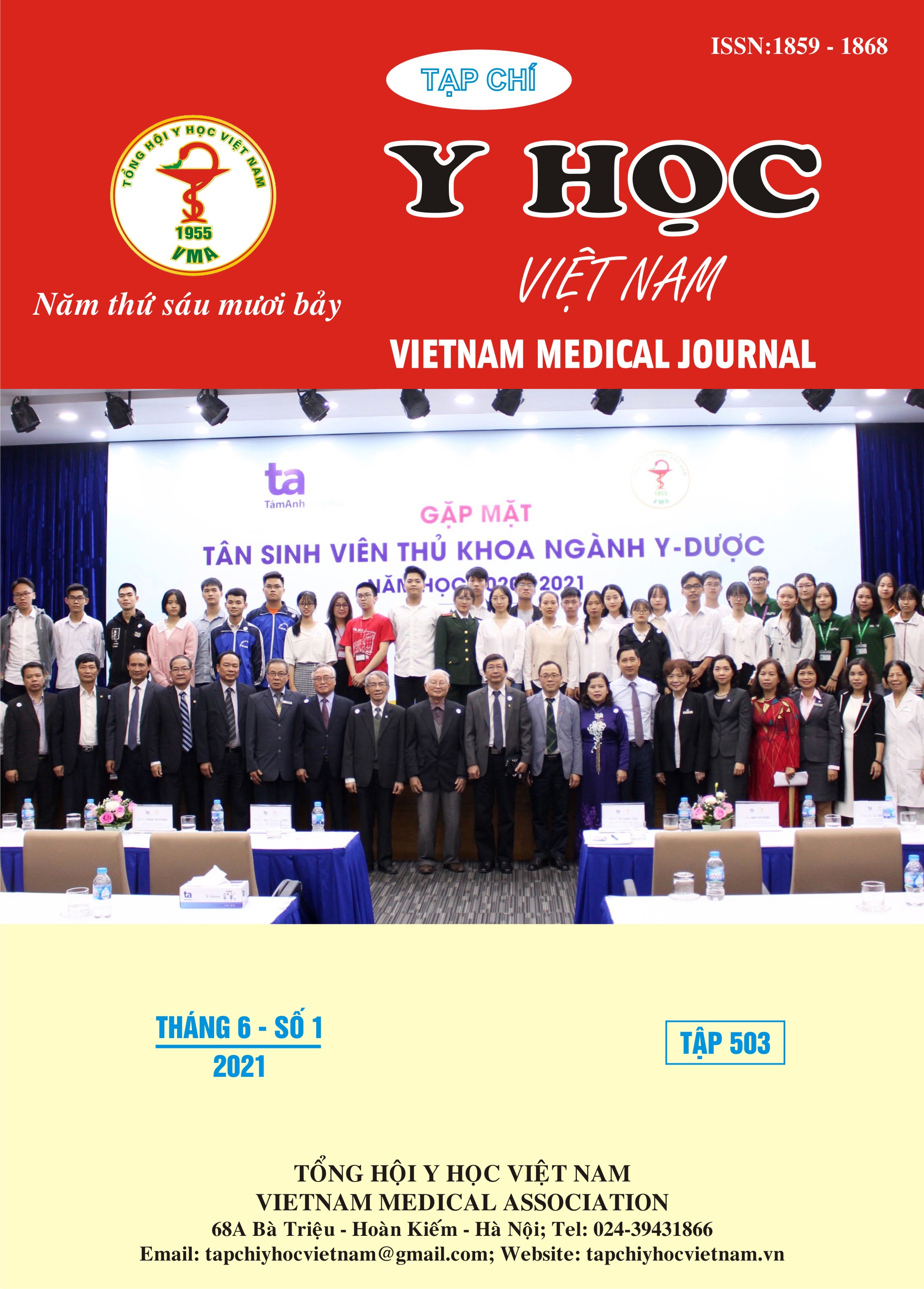GESTATIONAL TROPHOBLASTIC NEOPLASIA RATE AND ASSOCISTED FACTORS OF HYDATIDIFORM MOLE IN ELDERLY PATIENT AT TU DU HOSPITAL
Main Article Content
Abstract
Background: Hydatidiform mole (HM) in elderly patient has a high-risk developing post molar gestational trophoblastic neoplasia (GTN). Uterine evacuation is main method to treat HM. There are some prophylactic methods, they are prophylactic hysterectomy, chemotherapy or combining hysterectomy and chemotherapy. The purpose of utilizing these methods is to decrease risk of progressing GTN. The acknowledge of effectively prophylactic methods and rate of GTN in women older than 40 years of age which is useful for consulting and selecting suitable method of treatment. Objective: The study aimed to determine the GTN rate and asscociated factors associated of HM in elderly patients. Methods: This is a retrospective cohort study with 372 patients older than 40 years-old who were diagnosed HM based on histology by uterine evacuation at TuDu hospital from 01/2016 to 03/2019. Results: Followed-up by 2 years, 123 patients developed GTN, the incidence of GTN was 33.06% (95%CI:28.3-38.1). The median time progressed GTN which was 4.15±2.93 weeks. The highest rate of GTN was recognized at the second and third week after evacuation. Applying multivariate model, the rate of GTN was significantly higher in group older than 46 years of age than group 40-45 years-old (HR=1.63, 95%CI:1.09-2.44) and in vaginal bleeding group than none bleeding group (HR=1.85, 95%CI:1.16-2.96). Prophylactic hysterectomy or combined with chemotherapy reducing risk of progressing to GTN more than group which was not intervened (HR=0.16, 95%CI:0.09-0.30) and (HR=0.09, 95%CI=0.04-0.21) respectively. Prophylactic chemotherapy was not impact on diminishing risk of GTN (HR=0.74, 95%CI:0.21-2.62). Conclusions: The rate of post-molar GTN in elderly patient was 33.06%. Prophylactic hysterectomy and chemotherapy was effective treatment and helpful to decrease risk of GTN.
Article Details
Keywords
hydatidiform mole, gestational trophoblastic neoplasia, prophylactic hysterectomy, prophylactic chemotherapy
References
2. Bakhtiyari Mahmood, Mirzamoradi Masoumeh, Kimyaiee Parichehr, et al. (2015). "Postmolar gestational trophoblastic neoplasia: beyond the traditional risk factors". Fertility and sterility, 104 (3), pp. 649-654.
3. Fu J., Fang F., Xie L., et al. (2012). "Prophylactic chemotherapy for hydatidiform mole to prevent gestational trophoblastic neoplasia". Cochrane Database Syst Rev, 10 (10), pp. Cd007289.
4. Giorgione V., Bergamini A., Cioffi R., et al. (2017). "Role of Surgery in the Management of Hydatidiform Mole in Elderly Patients: A Single-Center Clinical Experience". Int J Gynecol Cancer, 27 (3), pp. 550-553.
5. Kaye D. K. (2002). "Gestational trophoblastic disease following complete hydatidiform mole in Mulago Hospital, Kampala, Uganda". Afr Health Sci, 2 (2), pp. 47-51.
6. Savage P. M., Sita-Lumsden A., Dickson S., et al. (2013). "The relationship of maternal age to molar pregnancy incidence, risks for chemotherapy and subsequent pregnancy outcome". J Obstet Gynaecol, 33 (4), pp. 406-11.
7. Wang Q., Fu J., Hu L., et al. (2017). "Prophylactic chemotherapy for hydatidiform mole to prevent gestational trophoblastic neoplasia". Cochrane Database Syst Rev, 9, pp. Cd007289.
8. Zhao P., Chen Q., Lu W. (2017). "Comparison of different therapeutic strategies for complete hydatidiform mole in women at least 40 years old: a retrospective cohort study". BMC Cancer, 17 (1), pp. 733.


